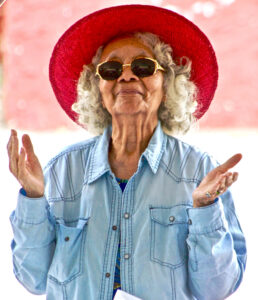Caring for Someone with PTSD

According to the National Center for PTSD, around 60% of men and 50% of women will experience at least one traumatic event in their life. In any given year, up to 8% of these, or eight million people, will acquire PTSD. Giving care to someone with PTSD has its own set of obstacles, but more understanding and awareness can help reduce the strain while providing the best care possible. Here is a closer look at PTSD, as well as five caregiver-friendly suggestions.
About PTSD
Post-traumatic stress disorder (PTSD) can develop as a result of witnessing or experiencing a distressing or dangerous incident. Accidents, assaults, abuse, conflict, disasters, and/or witnessing any of these occurrences are all common traumas.
After experiencing war and participating in life-threatening operations, many members of the military suffer from post-traumatic stress disorder. PTSD has also been linked with mild to moderate traumatic brain injury in veterans who have been exposed to blast waves from explosions.
PTSD can affect anybody, anywhere, at any age, despite its prevalence among those who have served in the military. Substance abuse, depression, and other anxiety disorders are common among those who suffer from PTSD.
According to the Mayo Clinic, some symptoms of PTSD are:
- Nightmares or unwelcome flashbacks of the trauma
- Avoidance of situations that trigger memories of the trauma
- Heightened reactions
- Anxiety or depression
In terms of severity and length, these symptoms vary from person to person. They can also be triggered by general stress or specific reminders, such as a sound or a news story, and they can grow in intensity over time. Fear of these triggers might make it difficult to engage in daily activities and live a normal life.
Caring for a Person with Post-Traumatic Stress Disorder
Understanding PTSD is crucial to assisting someone in managing the disorder and moving toward recovery. Caregivers can apply the following five methods of support:
- Listen.
While discussing feelings and experiences might be beneficial, it must be done on the patient’s own terms. So, what can you do while you wait? Be a listener who is available, and nonjudgmental.
- Be there.
Due to emotions of guilt, fear, and embarrassment, many PTSD patients avoid spending time with friends and family. Unfortunately, oftentimes this leads to social isolation. Your presence alone may be a priceless source of comfort for them. Encourage visits with family and friends but remember that your aging loved one’s comfort comes first, so follow their lead.
- Create a safe space.
Trauma victims may perceive the world around them as scary and unpredictable. Providing a secure, stable, and well-structured atmosphere might help them feel more secure.
- Be aware of potential triggers.
People who suffer from PTSD can be brought right back to their original traumatic experience in certain settings. Help them avoid triggers as you become aware of them, such as locations, images, scents, noises, etc.
- Have a plan.
Outbursts may still occur despite your best attempts. Remaining calm while assuring them that they are safe, as well as directly asking what they need and how you can assist them, can help ease the situation.
One more point to consider:
Caregivers of patients with PTSD are likely to experience secondary trauma, especially if they are overwhelmed, stressed, or isolated. What’s the takeaway? When caring for someone with PTSD, maintaining your own health and wellness is especially important. Develop your own support system and ask for help when you need it.
Thank you for reading, please follow us!
Instagram: @helphomecarecorp
Facebook: @8334HHCNOW
Twitter: @HelpHomeCareCo1

 Some seniors can be tempted to go without sun protection during the summer months. Some think that if they were going to develop skin cancer, they would’ve by now. Unfortunately, this idea untrue. Sun protection is important for all ages.
Some seniors can be tempted to go without sun protection during the summer months. Some think that if they were going to develop skin cancer, they would’ve by now. Unfortunately, this idea untrue. Sun protection is important for all ages.